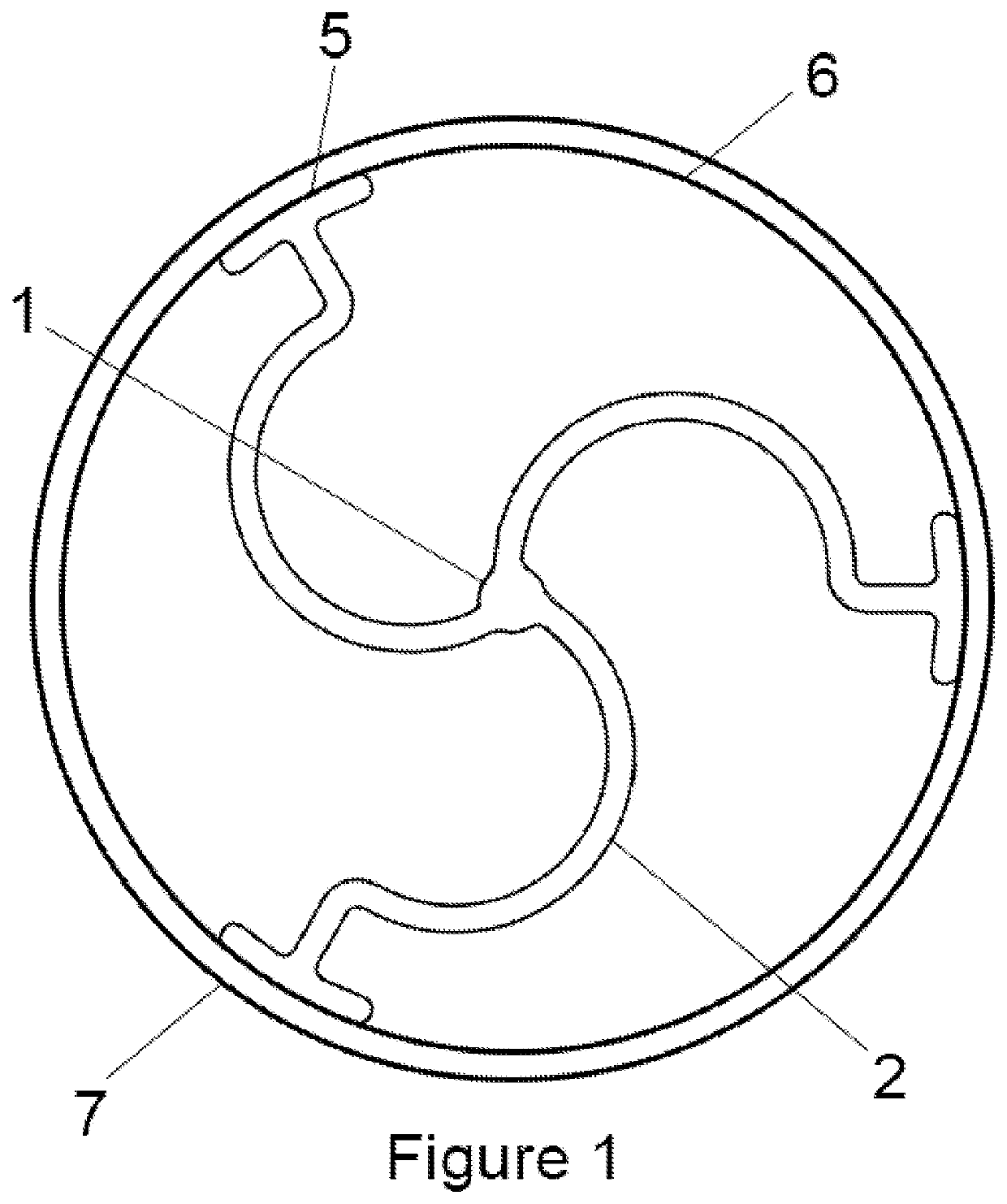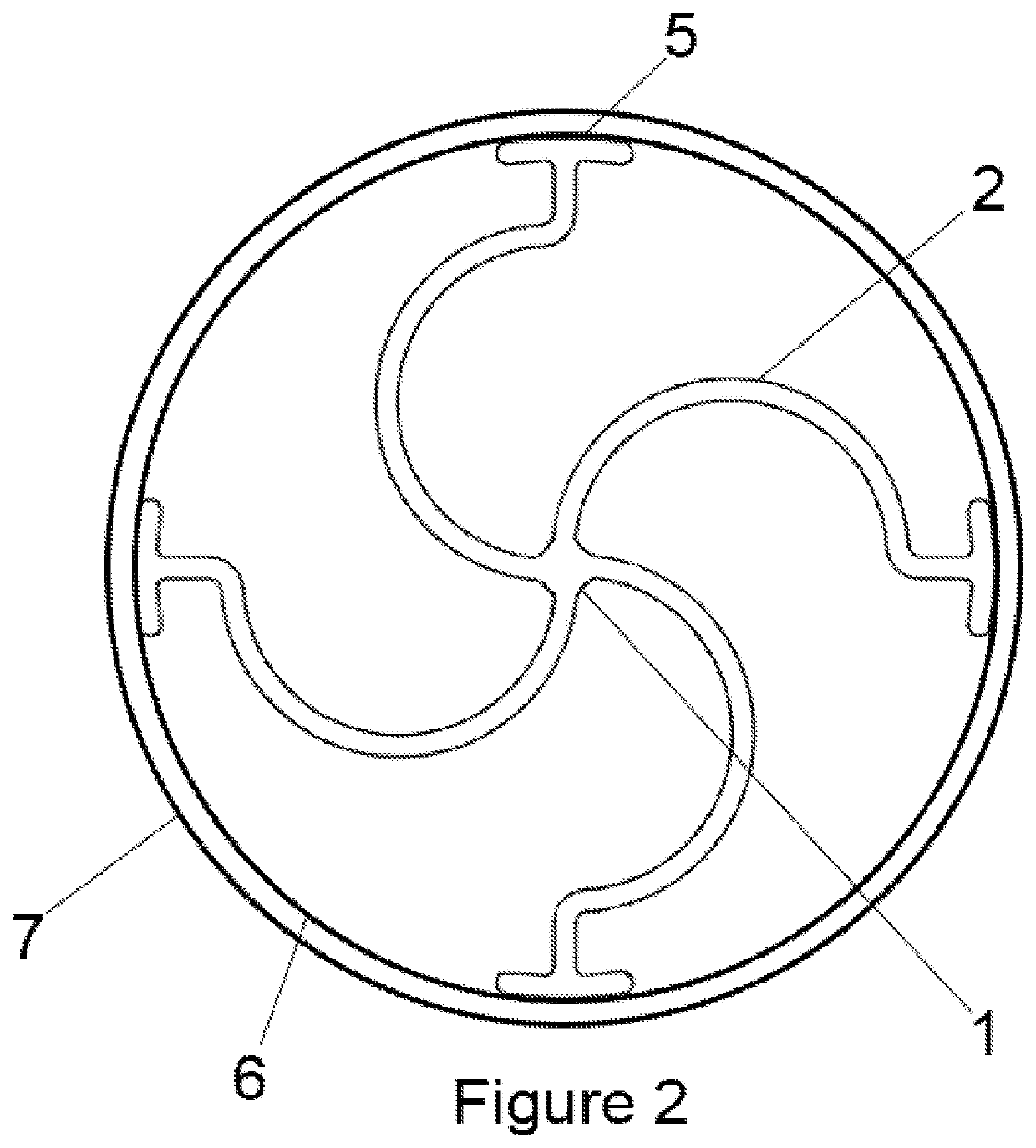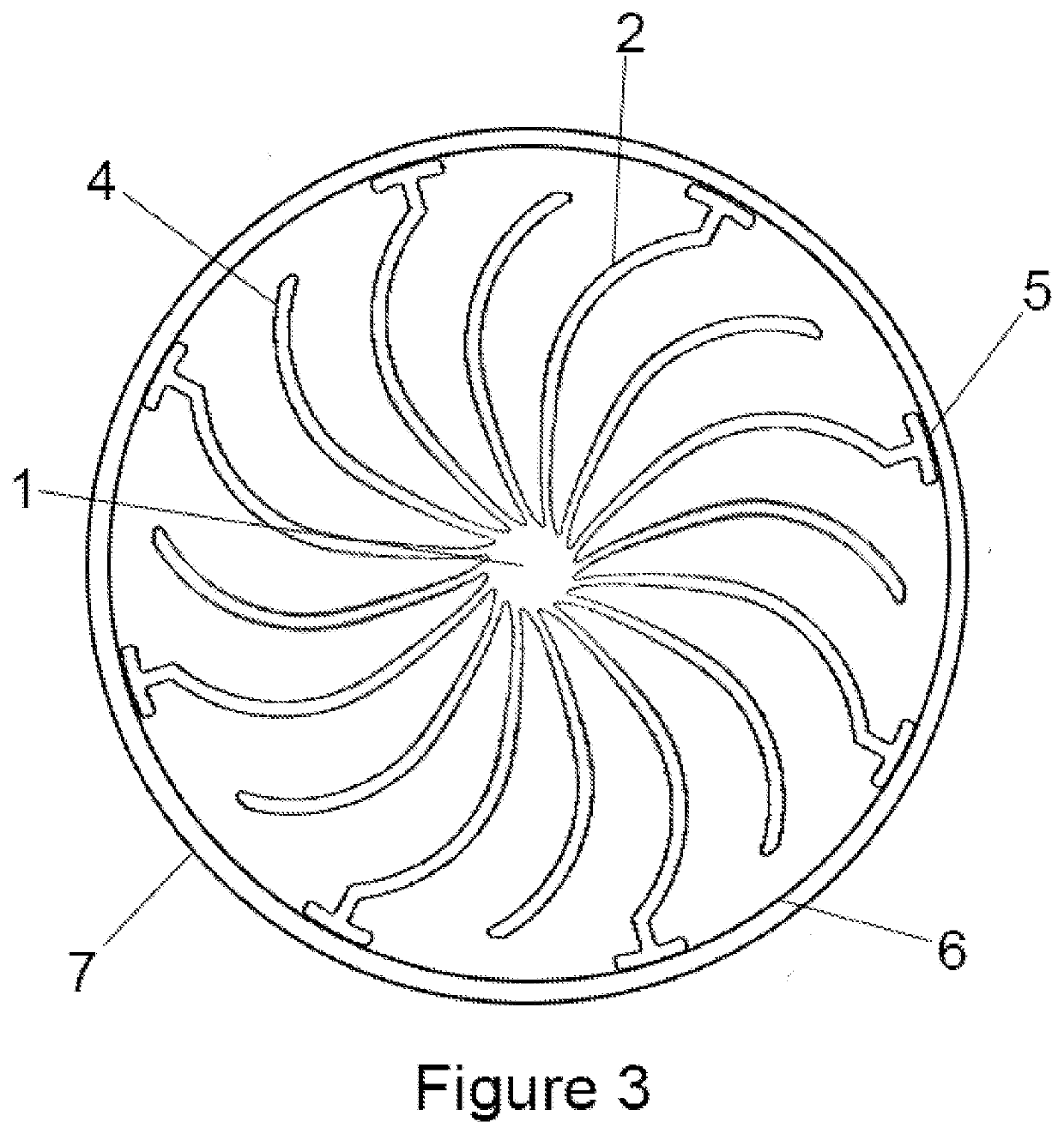Heat transfer elements
a catalyst/reactor system and heat transfer element technology, applied in chemical/physical processes, liquid hydrocarbon mixture production, chemical apparatus and processes, etc., can solve the problems of increasing reactor weight and cost, adding complexity, etc., and achieve high catalyst productivity, high catalyst productivity, and high throughput
- Summary
- Abstract
- Description
- Claims
- Application Information
AI Technical Summary
Benefits of technology
Problems solved by technology
Method used
Image
Examples
Embodiment Construction
[0019]The devices and methods discussed herein are merely illustrative of specific manners in which to make and use this invention and are not to be interpreted as limiting in scope.
[0020]While the devices and methods have been described with a certain degree of particularity, it is to be noted that many modifications may be made in the details of the construction and the arrangement of the devices and components without departing from the spirit and scope of this disclosure. It is understood that the devices and methods are not limited to the embodiments set forth herein for purposes of exemplification.
[0021]In general, in a first aspect, the invention relates to a heat transfer element 1 with substantially curved legs 2 to improve heat transfer in a vertical tubular fixed bed reactor 3. The heat transfer elements may have two or more legs 2 and any number of sub-legs 4 wherein at least two of the legs 2 have a foot 5 and make substantial contact with the inner wall 6 of the tubes ...
PUM
 Login to View More
Login to View More Abstract
Description
Claims
Application Information
 Login to View More
Login to View More - R&D
- Intellectual Property
- Life Sciences
- Materials
- Tech Scout
- Unparalleled Data Quality
- Higher Quality Content
- 60% Fewer Hallucinations
Browse by: Latest US Patents, China's latest patents, Technical Efficacy Thesaurus, Application Domain, Technology Topic, Popular Technical Reports.
© 2025 PatSnap. All rights reserved.Legal|Privacy policy|Modern Slavery Act Transparency Statement|Sitemap|About US| Contact US: help@patsnap.com



